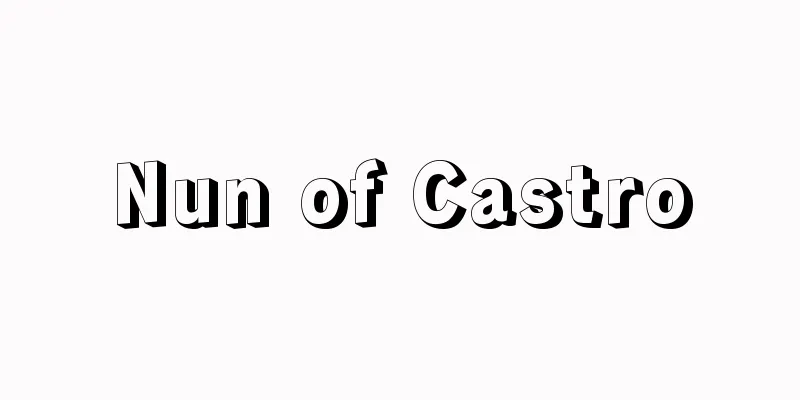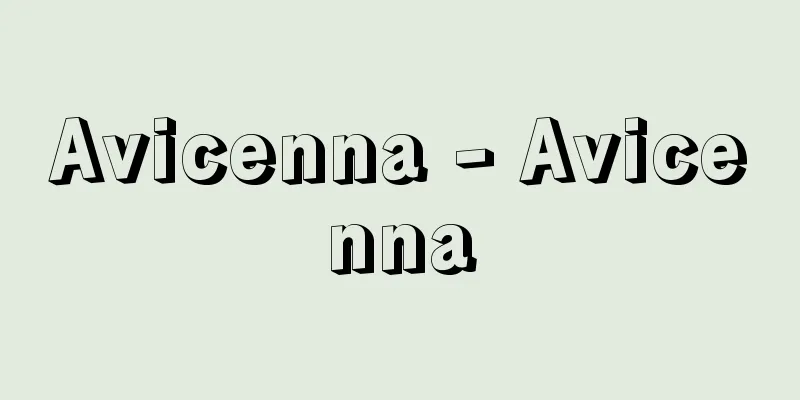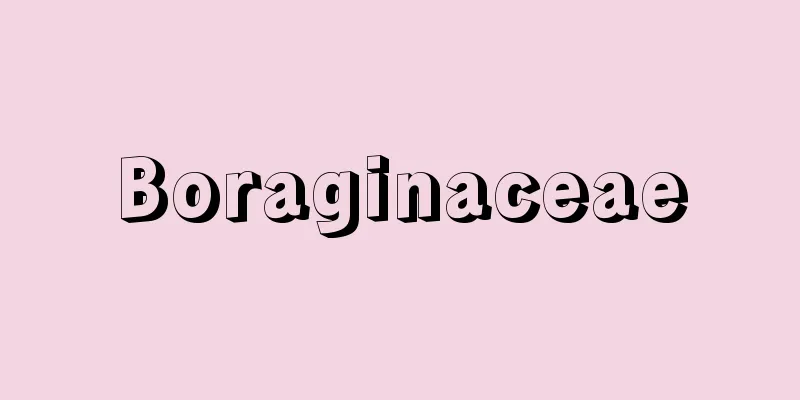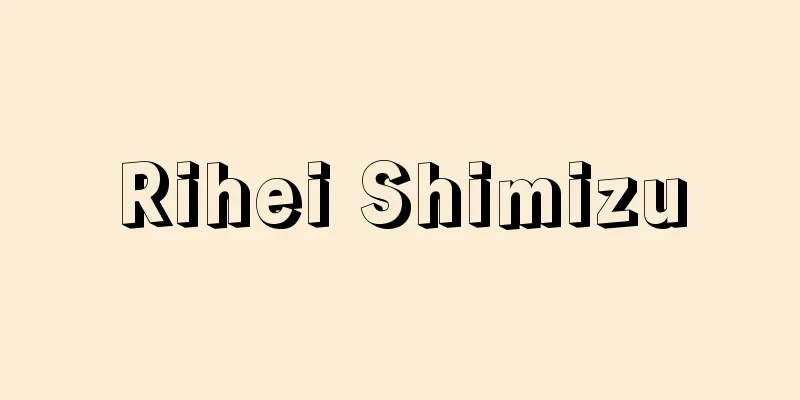Discharge - Discharge

|
Excretion is the process by which a living organism expels waste products resulting from metabolism. In animals, waste products usually include nitrogenous waste products, salt, and water. Therefore, excretion also plays an important role in osmotic regulation. Waste products do not include carbon dioxide produced by breathing, or feces, which are food residues and not a product of metabolism. The components of nitrogenous waste products vary depending on the type of animal. In bony fish, the main component is ammonia, in reptiles such as snakes and lizards and birds, it is uric acid, and in amphibians and mammals, it is urea. In plants, most of the decomposition products resulting from metabolism are stored in the body as they are. Examples include resins, tannins, calcium oxalate, and calcium carbonate found in leaves, petioles, and stems. These are sometimes called plant waste products, but in most cases they are actually useful. [Masayuki Uchibori] Excretory organsThere are excretory organs for excretion, which generally also serve as the main organs for osmoregulation. Plants do not have them, but animals have various forms depending on the species. Protozoans, sponges, and coelenterates do not usually have excretory organs (in freshwater protozoans, contractile vacuoles are thought to perform the excretory function), but flatworms, nematodes, and rotifers have something called a protonephric duct, at the origin of which there are flame cells with ciliated bundles. In annelids, there are nephric ducts (segmental organs) that exist in pairs in each body segment, and consist of a renal aperture that opens into the body cavity and a curved tubule that follows it. Modified nephric ducts include the renal capsule of mollusks (the one in bivalve mollusks is particularly called the Boyanus apparatus) and the antennal gland of arthropod crustaceans. Insects and myriapods have blind excretory organs called Malpighian tubules, which open into the intestine. Vertebrates have kidneys with well-developed renal ducts. For example, the kidneys of mammals are made up of the renal corpuscle (Malpighian corpuscle), which consists of the glomerulus and glomerular capsule (Bowman's capsule), followed by the renal tubules and their collecting ducts, and the renal pelvis. In terms of ontogeny and phylogeny, the kidneys of vertebrates are divided into pronephros, mesonephros, and metanephros. [Masayuki Uchibori] [Reference] |Source: Shogakukan Encyclopedia Nipponica About Encyclopedia Nipponica Information | Legend |
|
生体が物質代謝の結果生じた老廃物を体外に排除することで、排泄(はいせつ)ともいう。老廃物としては、動物では普通、含窒素老廃物のほか、塩分、水がある。したがって排出は同時に浸透調節という重要な役割を果たすことにもなる。呼吸の結果生じる二酸化炭素や、食物のかすであって物質代謝の産物ではない糞(ふん)は老廃物には含まない。含窒素老廃物の成分は動物の種類によって異なる。硬骨魚類ではその主成分はアンモニア、爬虫(はちゅう)類のヘビ・トカゲ類や鳥類では尿酸、両生類や哺乳(ほにゅう)類では尿素である。植物では物質代謝の結果生じた分解物を多くはそのまま体内に蓄える。葉、葉柄、茎などにみられる樹脂、タンニン、シュウ酸カルシウム、炭酸カルシウムなどがこれで、植物の老廃物といわれることもあるが、むしろ有意義な場合が多い。 [内堀雅行] 排出器官排出を行うための器官として排出器官があるが、この器官は一般に浸透調節の主要器官も兼ねる。植物にはとくにないが、動物では種類によってさまざまな形態のものがある。普通、原生・海綿・腔腸(こうちょう)動物は排出器官をもたないが(淡水原生動物では収縮胞が排出作用をすると考えられている)、扁形(へんけい)・紐形(ひもがた)・輪形動物には原腎管(じんかん)というものがあり、その起部には繊毛束をもった炎(ほのお)細胞がある。環形動物にみられるのは各体節ごとに対(つい)をなして存在する腎管(体節器)で、体腔に開く腎口とそれに続く屈曲した細管よりなる。腎管の変形したものに軟体動物の腎嚢(じんのう)(二枚貝のものはとくにボヤヌス器という)や節足動物の甲殻類の触角腺(せん)がある。昆虫類や多足類にはマルピーギ管とよばれる盲管の排出器官があり、腸に開口する。脊椎(せきつい)動物は腎管の発達した腎臓を有する。たとえば哺乳類の腎臓は糸球体と糸球体嚢(ボーマン嚢)よりなる腎小体(マルピーギ小体)、それに続く尿細管やその集合管、腎盂(じんう)などからできている。脊椎動物の腎臓には個体発生上および系統発生上、前腎、中腎、後腎の区別がある。 [内堀雅行] [参照項目] |出典 小学館 日本大百科全書(ニッポニカ)日本大百科全書(ニッポニカ)について 情報 | 凡例 |
<<: Emissions Standards - Emissions Standards
>>: Pei Xiu (English: Pei Xiu; P`ei Hsiu)
Recommend
Gunbei Ito
Year of death: Bunkyu 2.6.1 (1862.6.27) Year of bi...
Kazuo Fukumoto
Marxist theorist. Born in Tottori Prefecture. Aft...
Shih-wu xue-tang; Shih-wu hsüeh-t`ang
A school in late Qing China. It was founded in Cha...
Makinogoke - Makinogoke
A single genus and species of liverwort in the fam...
Katz, Bernard
Born: March 26, 1911, Leipzig [Died] April 23, 200...
Iki
An aesthetic sense that was popular mainly in the...
Banghazi (English spelling)
...Population: 446,000 (1988). In Arabic, it is c...
Vietnamese Chinese characters pronunciation
...the sounds (on) indicated by individual Chines...
Pair-oared shell with coxswain
… [Kikuo Hirose]. … *Some of the terminology that...
drummond phlox
...Perennial plants such as phlox and moth phlox ...
Alluvial plain - English spelling: alluvial plain
A plain formed by river sedimentation, which conti...
Shaku - Shaku
A perennial plant of the Umbelliferae family (APG...
Somatostatin
Growth hormone secretion inhibitory factor. It is ...
Hypericaceae
...There are about 300 species in the Hypericum g...
Tomosaburou Ogata
Pathologist. Born in Tokyo. Graduated from the Fa...









